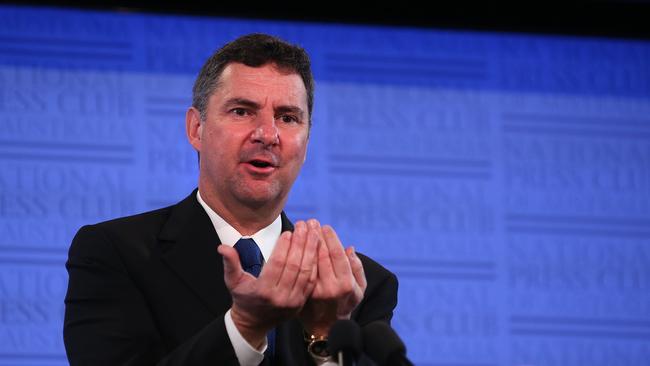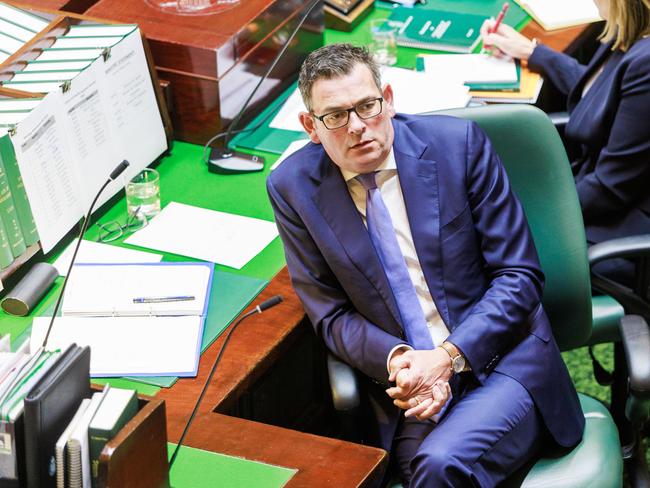
We discover this from the remarkable environmental revelations delivered to at the weekend’s Australian Davos Connections’ leadership conference in Brisbane.
The chief executive of CSIRO, Larry Marshall, shocked the greens in the audience when he revealed that without gas in the mix of electricity sources, the target of zero emissions by 2050 would cause widespread power shortages.
The conference was conducted under the Chatham House rule, but Marshall agreed to be quoted.
Andrews’ gas ignorance misleads the nation, drives power prices higher
Other senior federal government energy advisers at the conference endorsed Marshall’s conclusions, so presumably the meetings of state and federal energy ministers would have been told this politically difficult truth.
On the eastern seaboard, the new NSW energy minister will doubtlessly also be briefed that to supplement renewable projects, additional gas fields on the east coast will need to be developed to avoid blackouts.
They will be subject to the changes negotiated by the Greens to the carbon abatement legislation and will need to adopt international best practice baselines for the carbon dioxide in their new fields.
If he is serious about avoiding NSW blackouts, the new NSW energy minister will pull out the bureaucratic roadblocks holding back the Narrabri gas project and incorporate a power station.
Ironically, it is Victoria that has the best placed gas resource to inexpensively meet the new requirements.

Victoria’s deep onshore gas, that does not require fracking, is dissolved in water and the water can be used to grow plants like saltbush that store carbon in their roots.
The best US reserve estimators’ calculations indicate it could also supply NSW because the gas is close to the national pipeline and power grids.
Victorian Energy Minister Lily D’Ambrosio is fully aware of the potential of gas but along with Premier Daniel Andrews does not want to develop it for fear of annoying the Greens.
But the revelations at the ADC conference show that Victoria faces severe blackouts without its development. Given the abatement legislation sets out rules for development, it may actually make it easier for the premier and his energy minister to promote the Gippsland gas development instead of demanding Queensland provide Victoria with gas.
Australia tends to denigrate its renewable energy efforts, but in fact on a per capita basis, Australia is a world leader in solar and wind energy.
Unlike other countries when we go to an international conferences like Kyoto, Paris or Edinburgh we actually honour our undertakings. Other country delegates at these conferences make undertakings but don’t implement them. Accordingly, after such conferences, emissions rise.
On the other hand, there is now considerable international momentum developing to reduce emissions, so at future conferences non-Australian delegates may take their commitments seriously.
But both in Australia and in most countries, the efforts to reduce the carbon dioxide are focused on carbon emitted into the atmosphere.
But world delegates told the ADC conference that such techniques used alone would be very painful and might not achieve the high emission-reduction targets.
Emission reduction schemes need to be joined with those that take the carbon from atmosphere. The most efficient way of doing this is of course suitable tree planting and the preservation of rainforests.
Australia’s vast arid inland has great potential to grow saltbush and similar plants that absorb carbon rapidly via their deep root systems.
Saltbush can also be used as a source of protein.
Storms strike Labor-Greens greenhouse gas emissions deal
The CSIRO is at the early stages of developing a new material that can extract carbon out of the atmosphere for storage. This underlines that we are only now developing new technology momentum. It is highly likely that small power plants including thorium and salt cooled installations are going to be an important part of the carbon emissions landscape.
If new technologies gather enough momentum, gas may not be necessary in the final decade of the 2050 timetable, but nobody can be sure.
Many nations including Australia simply look at the emissions that take place on a country wide basis without looking at the way the material being used to achieve domestic energy reductions is being extracted.
Cobalt is an essential element in the production of batteries, which is in turn an essential ingredient in electrification. In the Congo, vast amounts of cobalt are being extracted at the cost of forests.
There are very few countries in the world with Australia’s capacity to produce solar and wind power and to store carbon in the roots of plants.
A very important part of this new international era will be to use Australian low cost solar and wind energy capacity plus plant based carbon storage to embrace new technologies that produce steel at a fraction of the emission rate of current production.
Almost certainly, iron as the first stage of steel production will be produced in Australia with far lower emissions than current technologies. In the great iron ore boom, which started in the 1960s, former West Australian Premier Charles Court, tried very hard to get BHP and Rio Tinto to make steel in Australia rather than export the iron ore to China and elsewhere.
There were several attempts, but they proved uneconomic.
This time around, the new steel making techniques are very well suited to be developed in Australia and steelmakers will likely take advantage of Australia’s availability of gas and low-cost green power.






It might not have been the aim, but the government’s carbon abatement legislation will introduce an effective carbon tax on domestic and industrial power usage.